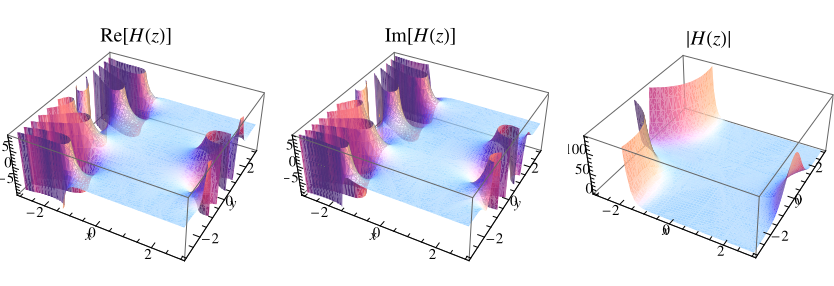The hyperfactorial (Sloane and Plouffe 1995) is the function defined by
|
(1)
| |||
|
(2)
|
where
is the K-function.
The hyperfactorial is implemented in the Wolfram Language as Hyperfactorial[n].
For integer values ,
2, ... are 1, 4, 108, 27648, 86400000, 4031078400000, 3319766398771200000, ... (OEIS
A002109).

The hyperfactorial can also be generalized to complex numbers, as illustrated above.
The Barnes G-function and hyperfactorial satisfy the relation
|
(3)
|
for all complex .
The hyperfactorial is given by the integral
|
(4)
|
and the closed-form expression
|
(5)
|
for ,
where
is the Riemann zeta function,
its derivative,
is the Hurwitz
zeta function, and
|
(6)
|
also has a Stirling-like
series
 |
(7)
|
has the special value
|
(8)
| |||
|
(9)
| |||
|
(10)
|
where
is the Euler-Mascheroni constant and
is the Glaisher-Kinkelin
constant.
The derivative is given by
|
(11)
|